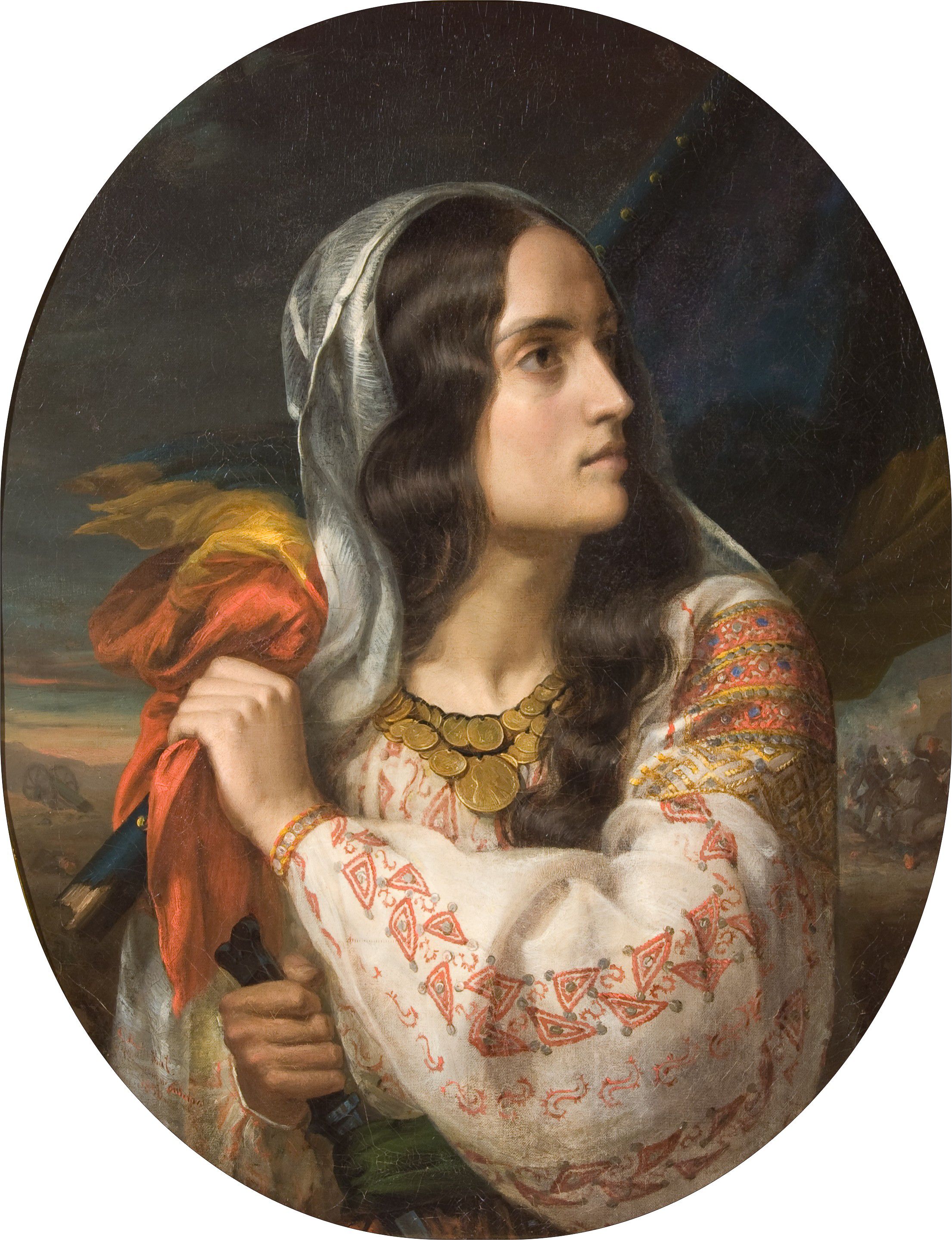The painting was executed in Paris, where Rosenthal joined the exiled Romanian revolutionaries, following the toppling down of the Wallachian uprising by Ottoman troups. It is an allegorical representation of the social and national ideals many European intellectuals held for their respective peoples and countries. The painting shows Maria Rosetti turned to her left, dagger in one hand, Romanian flag in the other.
Wife of C. A. Rosetti, whom Rosenthal had befriended during their study years in Vienna, Mary, née Grant, was of a romantic, southern disposition despite her Scottish origin. She played an essential role in setting the Romanian revolutionaries free following their inprisonment abord an Ottoman ship on the Danube. Her dedication and energy were an inspiration and turned her into a symbol of the revolutionary uprising in Wallachia. Little wonder that the Budapest-born Rosenthal made her into his muse.
The painting shows her dressed in the Romanian folk costume she disguised herself in while following the ship on which the Romanians were held hostage. The pathos of her posture is inspired by various romantic compositions Rosenthal was familiar with.
We can catch a glimpse of Maria Rosetti’s face in a small medalion in the middle of a still-life by Rosenthal. Could it be that the painter’s admiration for her was deeper that he could have openly admitted?



